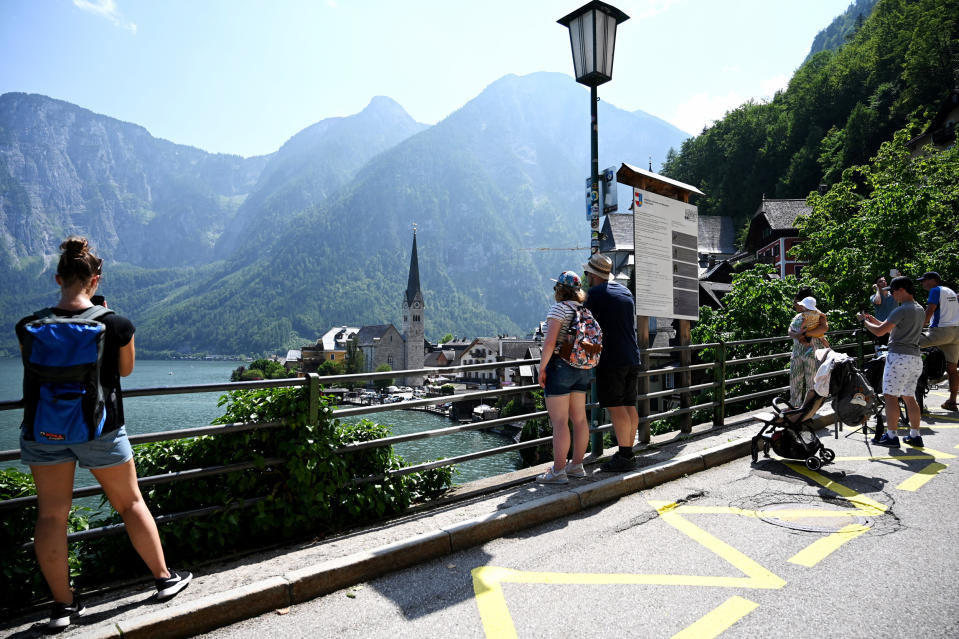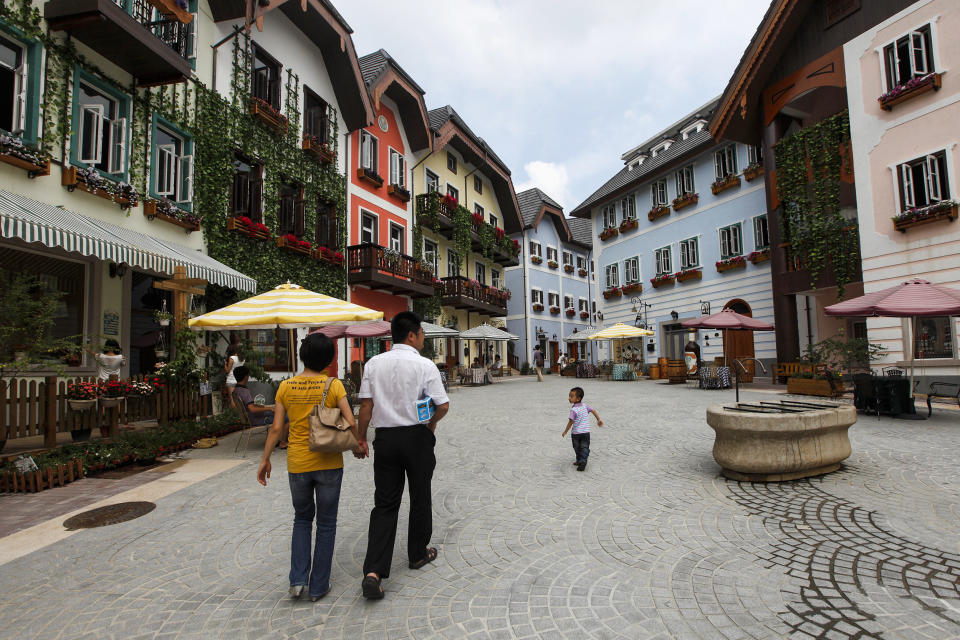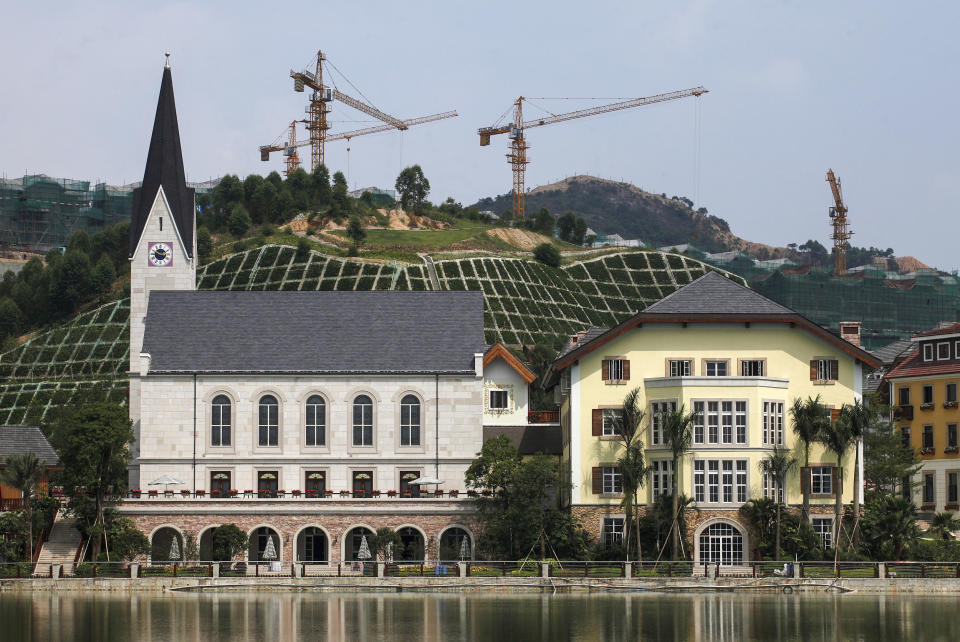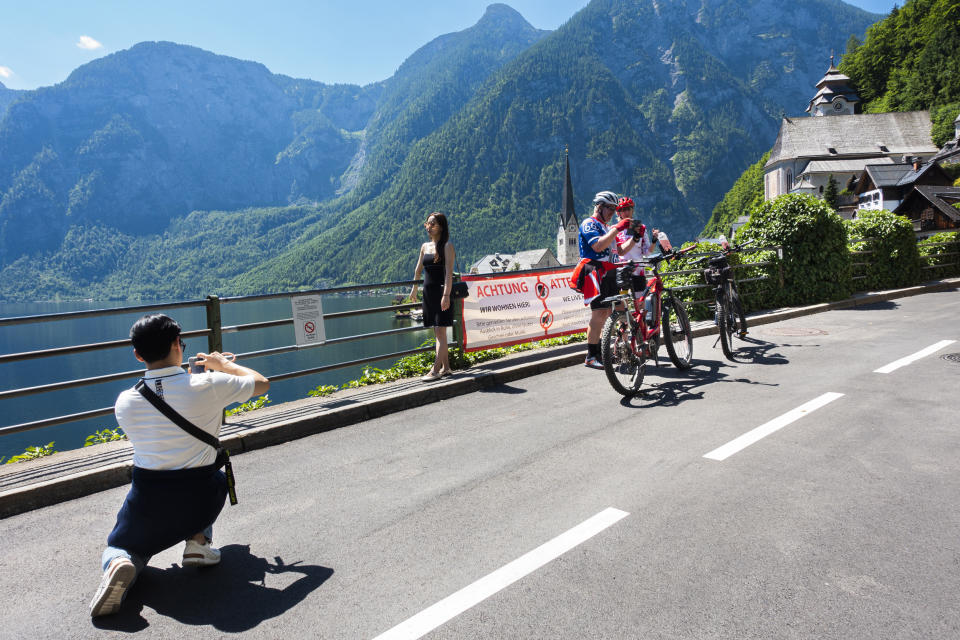In a fairy-tale Austrian town, residents protest daily swarm of selfie-seeking tourists
The idyllic Alpine valley in which the Austrian town of Hallstatt rests looks like a fairy-tale come to life — so much so that visitors are often struck by its similarity to the fictional icy kingdom of Arendelle in Disney's "Frozen."
But for residents tired of an influx of day-tripping tourists chasing the perfect Instagram photo at this World Heritage Site, the reality is somewhat less enchanting.
"Stop the traffic craziness it makes us sick" read one sign held by the almost 100 protesters who blocked the main tunnel road leading into the town last weekend. "Everything for tourists, nothing for us," read another.
“We have too many tourists at the moment and need to find solutions to reduce the number of visitors,” Hallstatt Mayor Alexander Scheutz told NBC News.
Situated on Hallstätter lake in the Austrian Alps, the town has about 750 permanent residents but often welcomes more than 10,000 visitors a day — many of them from Asia.
Nestled between the lake and a steep mountainside in Austria's vertiginous Salzkammergut region, the town is reachable only through a single road, which can often become congested in the peak tourism season.

Hallstatt resident Friedrich Idam, 62, said residents felt the need to protest against this “avalanche” of mass tourism.
“Hallstatt no longer lives on tourism; it is being squashed by overcrowding,” he said.
This Alpine idyll is just one of many overcrowded, photogenic sites across Europe where tensions between residents and tourists have risen to a boiling point.
"There is always an assumption that this only happens in Venice or Barcelona, but it's not the case, you will see this around the world," said Xavier Font, an expert on tourism and sustainability at the University of Surrey in southwest England.
"This group of people in Austria have just become organized and are saying 'enough.' And they are right to say it. In some parts of the world, people are poor and have to put up with it."
Hallstatt was featured on a Korean television show in 2006, triggering a wave of hype on social media. Town officials said that tourists from 87 nations had been registered as visitors this year so far, including many from the United States.
U.S. tourists tend to stay overnight, while others are more likely to visit on a day trip, residents said.
As for the supposed links to Disney's "Frozen," despite the valley’s uncanny resemblance to the scenery in the movie, the filmmakers said they modeled their fictional kingdom on Norway. Its plot is based on “The Snow Queen,” by Danish fairy-tale writer Hans Christian Andersen.
The picturesque town had become so popular among Chinese tourists that a Chinese company built a full-size replica of the Austrian town in faraway Guangdong Province in 2012, reportedly costing $940 million.
However, the Hallstatt tourism board says on its English-language website: "But only in the original will you discover this truly unique culture with such a history all in a breath-taking mountain setting." It's an invitation to foreign visitors who local officials are now trying to restrict.
After tour operators were forced to book dedicated slots before arriving with tourist buses, activists are now also calling for a limit on the numbers of private vehicles and tourists per day.


In 2019, about 90 tour buses arrived per day. With the introduction of the booking system, the community now welcomes on average 30 to 35 buses per day, Scheutz, the mayor, said.
“In our tiny community, we have created 450 parking spaces and have 12 full-time employees handling traffic management,” he said.
Millions of visitors have already taken their snapshots against Hallstatt's stunning backdrop, which the tourism office describes as "one of the world's most beautiful.
"But only in the early mornings and in the evening, when the day-trip tourists have left, will you find the authentic village atmosphere at the moment,” Scheutz, who is a Hallstatt native, said.
Idam, who moved to Hallstatt as a student in 1976, said that because "our central marketplace is overrun by tourists, we have now been organizing our weekly farmers' market in a somewhat hidden location for the residents."

Tourism makes up more than 6% of Austria's economy, but international travel restrictions and closures of hotels and restaurants because of Covid restrictions had a strong negative effect.
Since then, Austria has experienced an upward trend in tourist numbers, with a total of 39.5 million overnight stays in the first half of this year’s summer season, between May and July, an increase of 1.7% compared with 2019.
After the "quiet pandemic times," the numbers of tourists started to skyrocket again last year, Scheutz said, adding that "Hallstatt has become a brand."
Many residents wish it hadn't.
"Hallstatt is only the tip of the iceberg," Idam said. With the increasing mass tourism, "an avalanche is rolling toward us," he said.
This article was originally published on NBCNews.com

